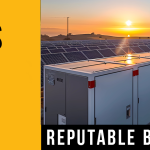 The islands of Hawaii are known for their gorgeous landscapes and world famous beaches, but they’re probably not the first place you think of when you think of renewable energy. But they should be.
The islands of Hawaii are known for their gorgeous landscapes and world famous beaches, but they’re probably not the first place you think of when you think of renewable energy. But they should be.
Hawaii is the first state in the U.S. where rooftop solar has become an almost standard item on homes and businesses, something I personally witnesses recently driving around the islands of O’ahu and Kaua’i. Solar panels are also in places unthinkable in other locations. They face north, they’re covered by trees, and some look like they’re barely attached to the roof itself. But Hawaiians find solar to be so economical that almost all solar makes sense, and they are increasingly finding energy storage an economical solution as well. Understanding just how energy storage is working here can help us understand why companies are proving their technologies of the future on the Hawaiian Islands.
Island energy doesn’t look like continental U.S. energy
On average, U.S. residential consumers pay 12.45 cents per kWh for electricity. Prices vary by state in the continental U.S., from 9.33 cents per kWh in Louisiana to 19.95 cents per kWh in Connecticut, but the prices in the lower 48 states pale in comparison to those in Hawaii.
According to the EIA, in October 2016 residential electricity prices in Hawaii were 27.54 cents per kWh, and on the island of Kaua’i rates are 32.78 per kWh starting this year. That makes solar extremely viable given the fact that power purchase agreements for residential projects can be found for less than $0.13 per kWh. Utility contracts are going for less than $0.05 per kWh. And the difference means energy storage can make financial sense as well.





